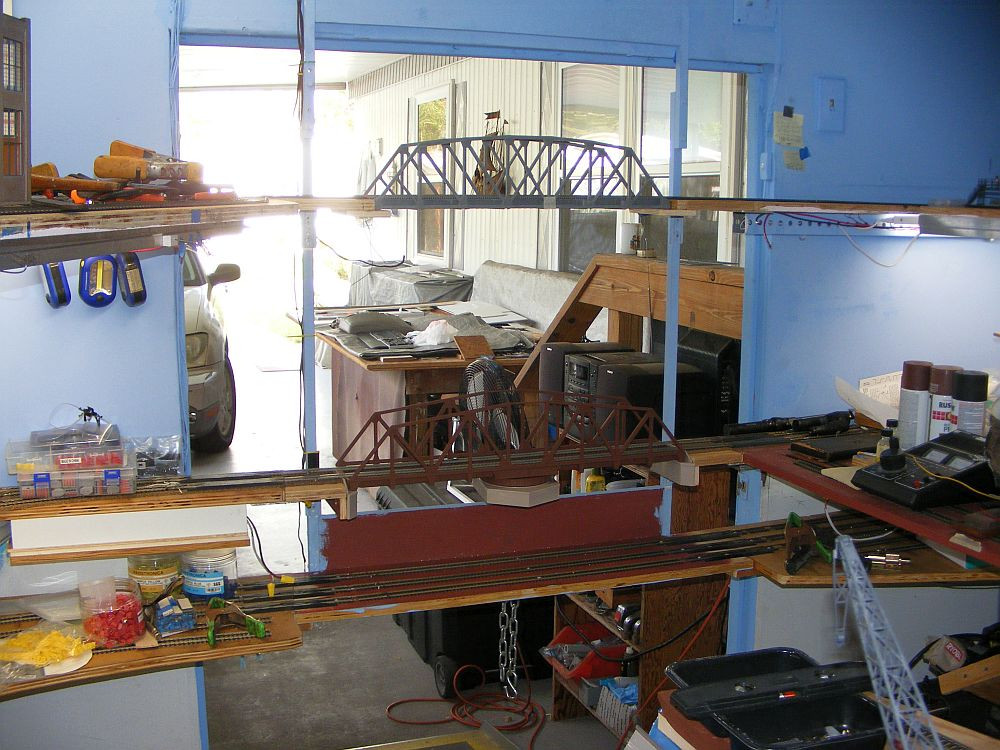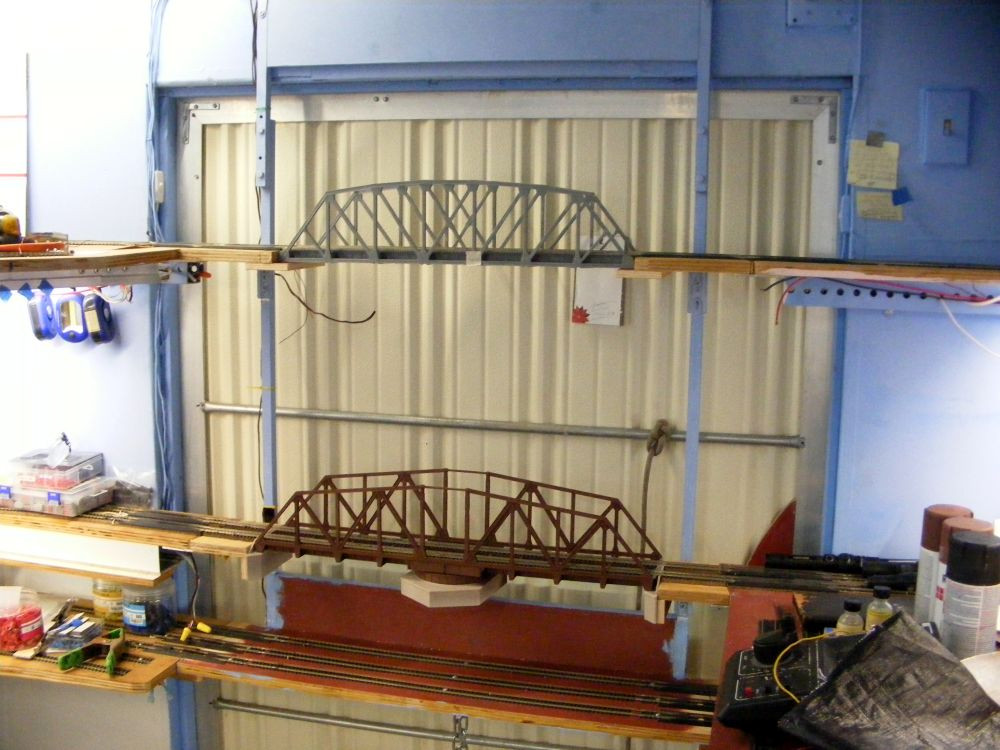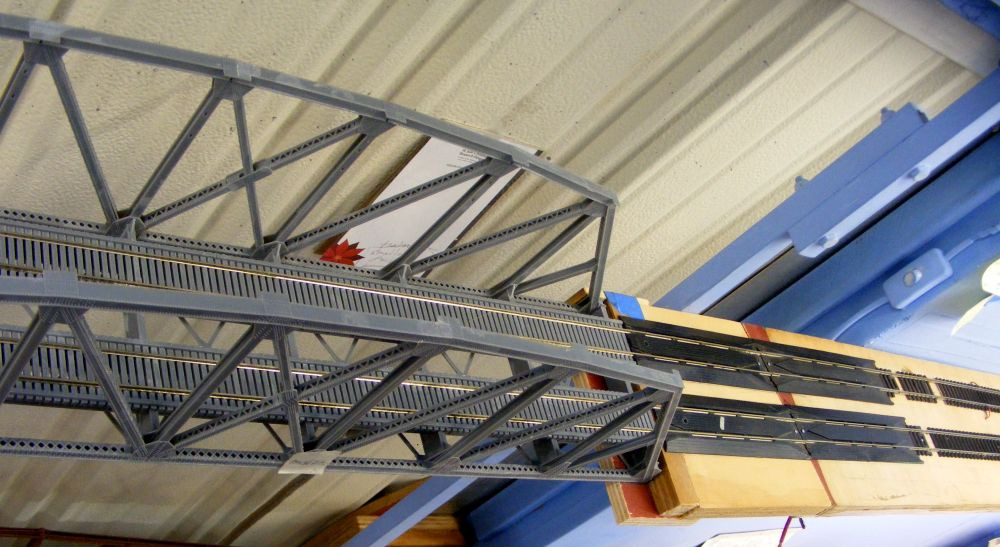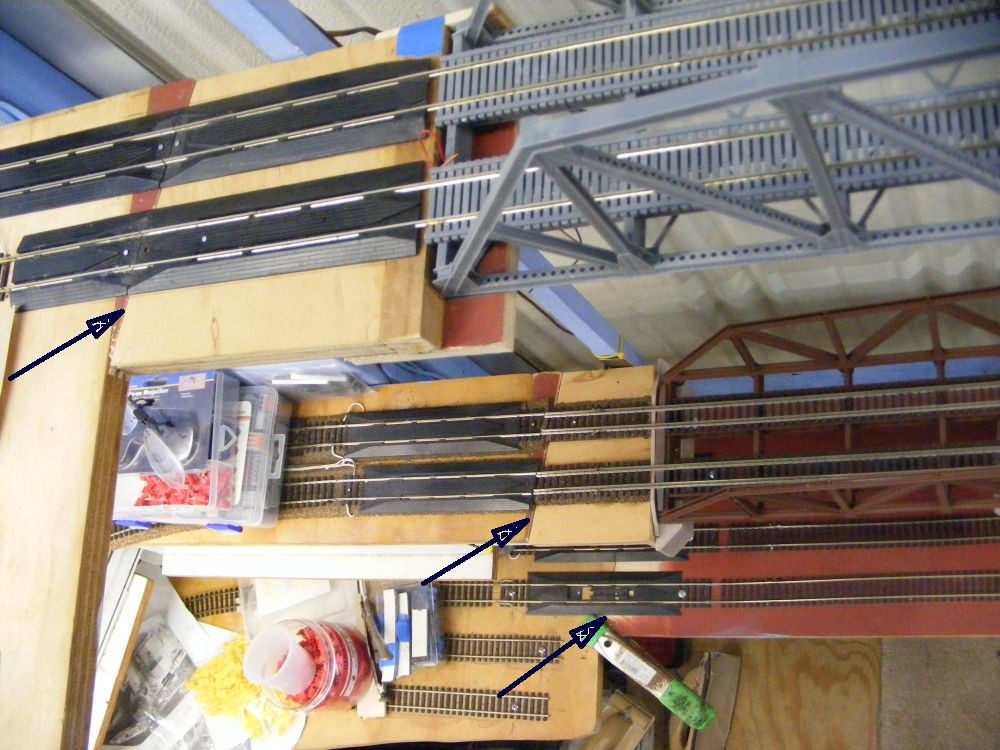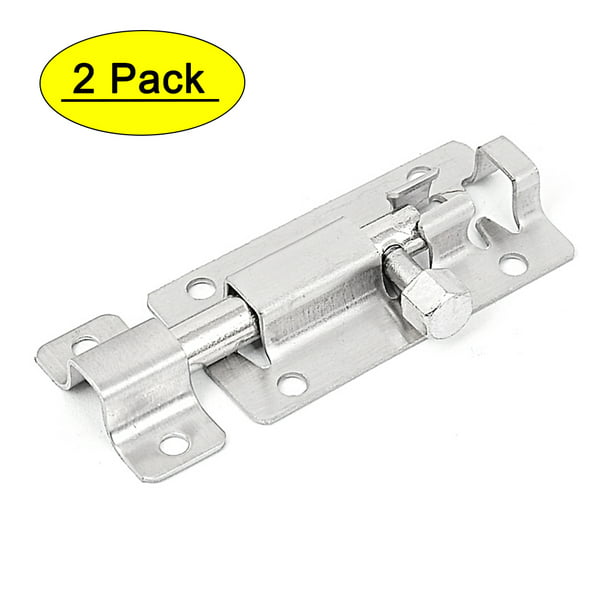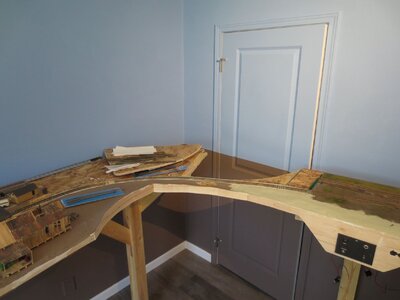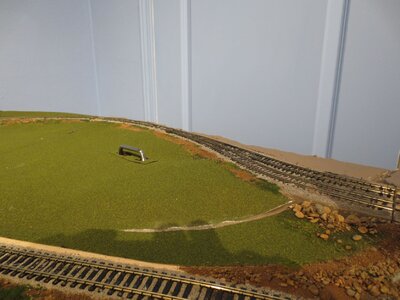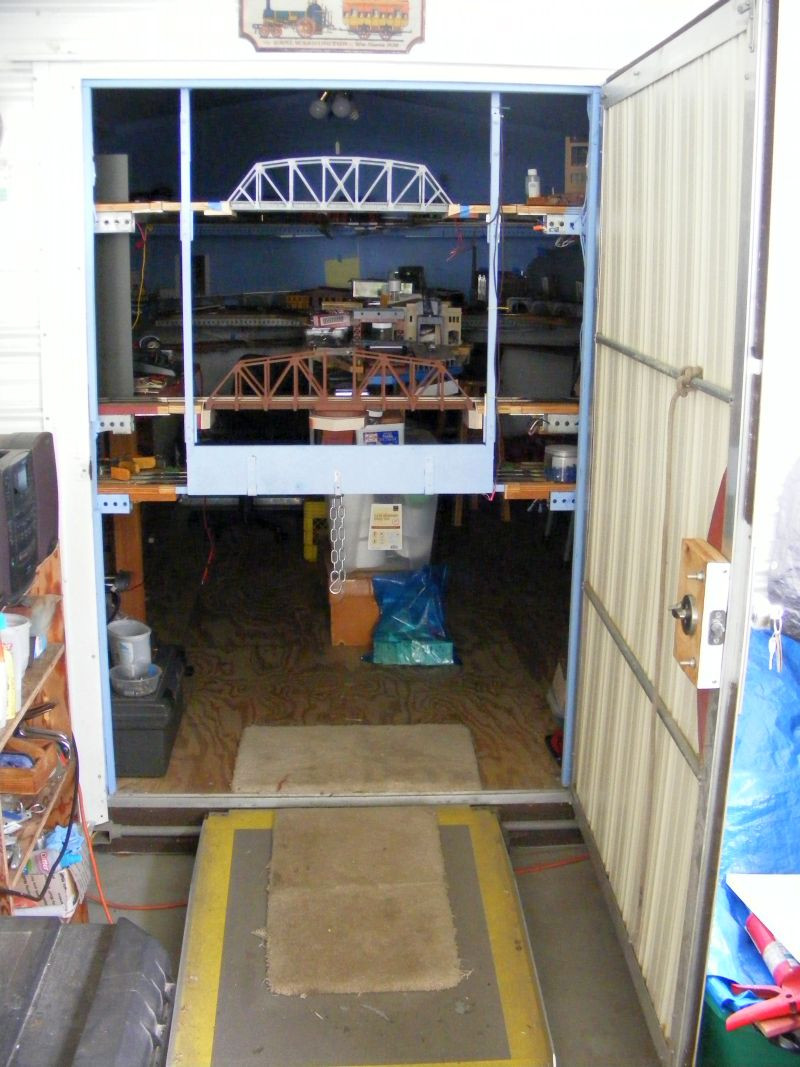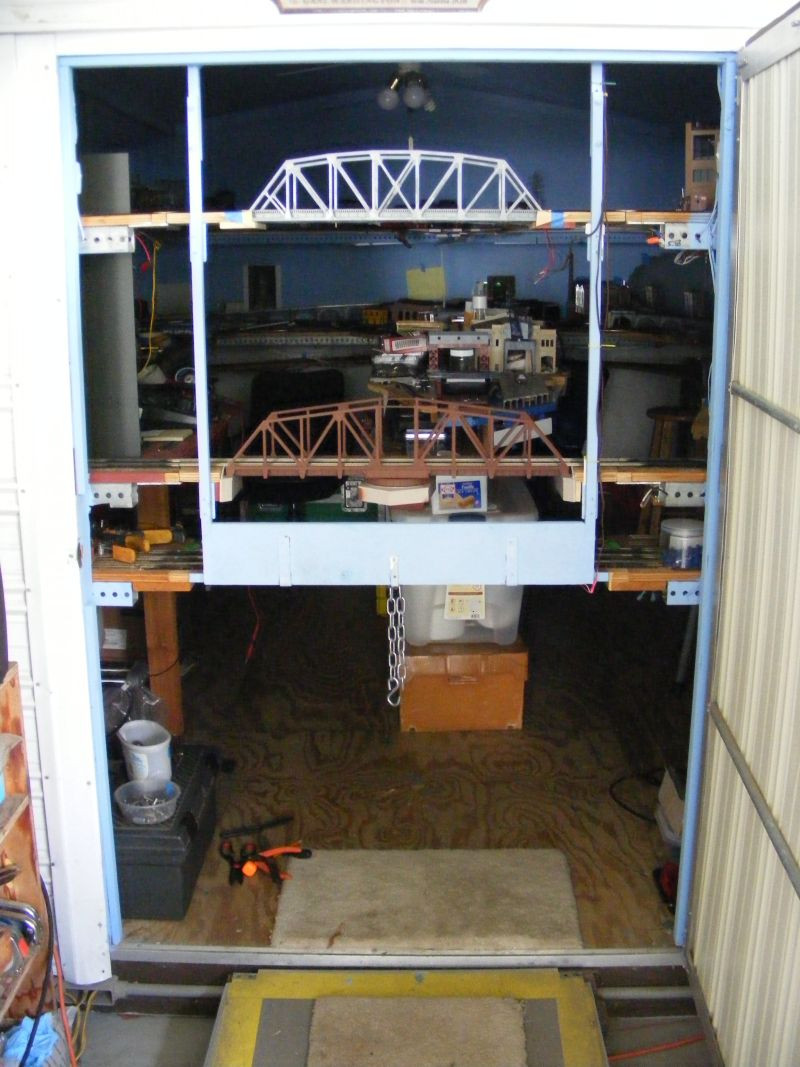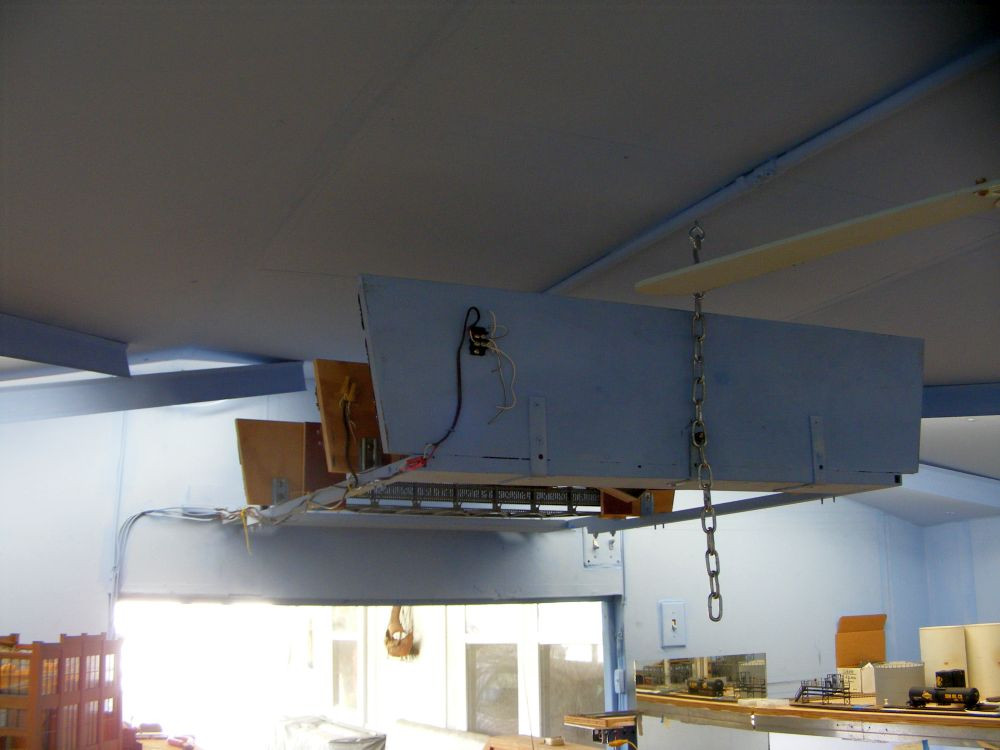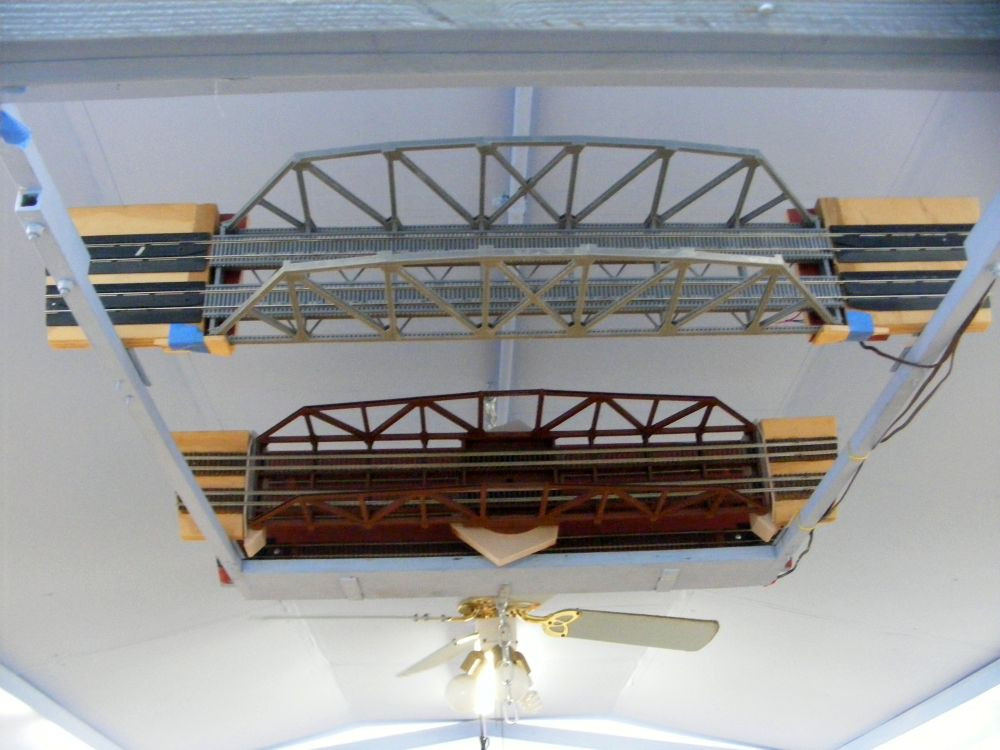Bridge Selections
1) No need to select a bridge type for the lower staging level,...just plain plywood deck crossing.
2) I was originally hoping to fit in some sort of bascule bridge type, but almost no one made a double track one. I did consider 2 side-by-side Walthers ones, but the arrangement was too wide and would have interfered with both my blast furnace on one side, and the waterfront scene on the other side. So reluctantly I sold off my Walthers kits and decided to use the Walthers double track swing bridge.
3) I thought perhaps the use of this relatively simple double track bridge was going to make life much simpler. Au contraire, going to have to consider a number of other installation problems,...just to name 2,...height above water surface already set by next door waterfront scene, and seriously considering restricting bridge to NO rotation as this would involve more cuts in the rails crossing the door opening
in addition to those needed for the lifting structure,..too many cuts to align.
Nobody said this was going to be simple, straight forward.
And if this wasn't enough, I discovered that the long wooden single track bridge I had been thinking of using for the very top level,...well it won't accommodate dble-stacks, nor auto cars,...both of which I had planned on running up there on occasions.
New top deck double-track bridge installation.
I am attempting a rather unique application of a long length of bridge rail,... in combination with sections of re-railers at either end. ( I am a real believer in having rerailers on either side of my elevated bridge rails crossing my entrance-way)
My bridge structure by itself does NOT span the entire width of the lifting section,..but rather there are two short sections of plywood deck on either end before the actual cut-off gaps. Those cut-off lines are illustrated here,..
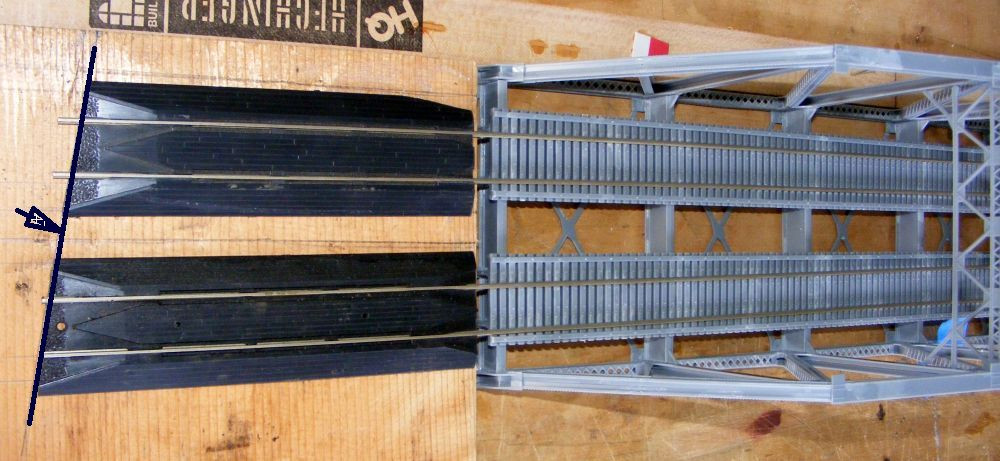
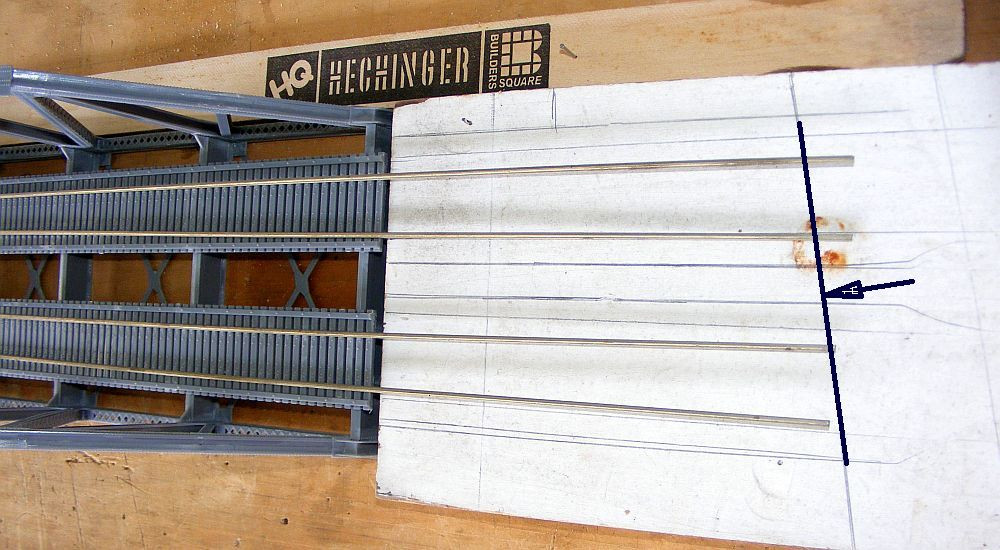
As you can see there is approx a 6" space between the end of the bridge tracks and the cut-off gaps. I want one half of the rerailer in that space (the other half will be on the other side of that cut-off gap).
I wanted to see if I could install that short piece of rerailer WITHOUT using any kind of rail jointer between it and the actual bridge tracks,....just make it one continuous track section. This involved removing the rails from the Atlas rerailers, then sliding those onto the ends of the extended bridge rails. This was quite an operation! In the photos above you will see I have done one side, and today hope to finish the other side.



